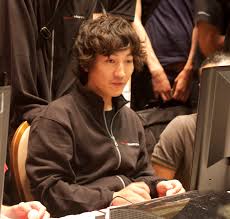The King of Fighters

March 1, 2021
In 1987, Street Fighter was released in arcades in Asia and North America. This game was the initial entry into the series that would become the most famous 2D fighter of all time: Street Fighter. The sequel to Street Fighter, the aptly named Street Fighter II, was released four years later in 1991 and would essentially invent the fighting game genre through the introduction of combos and character rosters. This game would go on to gross an estimated ten billion dollars in total revenue, making it the best-selling fighting game for 28 years until the release of Nintendo’s Super Smash Bros. Ultimate. Street Fighter II would not only define the genre of fighting games, but would also define the lives of many of its players. One of these players was a ten-year-old living in Tokyo at the time: Daigo Umehara.
Some would make the argument that fighting games, a large subsection within the greater eSports community, do not constitute a sport. However, a sport is typically defined as having two major components: a degree of skill and physical exertion. The majority of eSports actually fit within that definition. For example, within fighting games, players must train their hands to be able to perform actions and input combinations incredibly quickly into their controller or arcade stick of choice. There are several instances of players suffering injuries to their hands that have ended their careers. A professional Super Smash Bros. Melee player, Hax, was forced to leave the game for several years after sustaining injuries that required multiple surgeries on his wrist. Therefore, physical exertion is an element in fighting games. Skill can also be demonstrated quite easily, as the many tournaments dedicated to fighting games and the perennial champions of these games show. In summary, eSports fit the definition of sports by being skills-based and containing an element of physical exertion.
Daigo Umehara began his career in Japanese arcades, playing Street Fighter II and Fatal Fury, both well-known two-dimensional fighting games. As he grew older, his skill at 2D fighting games grew, eventually accumulating an incredible 286 game win streak in Night Warriors: Darkstalkers’ Revenge in North America. Umehara would win his first “major” tournament at the age of seventeen in 1998. Capcom hosted an official tournament for Street Fighter Alpha 3, the newest entry into the vaunted Street Fighter series at the time. After emerging victorious in the Japanese section of the tournament, he defeated the American champion, Alex Valle, in a dramatic comeback. Over the course of the next few years, Umehara would dominate the professional fighting games scene, winning or coming in second in almost every major Street Fighter event of the era.
At Evolution 2004, however, he would experience what is considered to be the greatest moment in the history of competitive fighting games: Evo Moment 37. His opponent in this match was Justin Wong, an American player best known for his skill at Marvel vs. Capcom 2, but who also excelled at almost every major fighting game series on the market at the time. Wong was known for playing very defensively and being able to bait other players into making poor decisions with his extremely good fundamentals. Wong played as Chun-Li, widely regarded as the best character in Street Fighter: 3rd Strike. In contrast, Daigo was considered to be a very honest player, typically playing as Ryu or Ken, both balanced and effective characters, but not a favorable match-up against Chun-Li. After a brutal round, Daigo was reduced to his final pixel of health, meaning that any special move that Wong landed would end the match. Sensing that the end was near, Wong finally went on the attack, triggering Chun-Li’s super art, a sixteen-hit combination that was sure to connect and end the round. However, the game featured a unique mechanic known as parrying. By parrying, a player could prevent all damage done by an attack, if they were able to input a specific directional movement corresponding to the type of attack within a tenth of a second. Daigo was able to hit that tenth of a second window sixteen consecutive times, a move which required incredible timing and memorization. After parrying Wong’s final move, Daigo launched his own super art combination, ending the match. This moment went viral on the early internet, propelling interest in Street Fighter and the entire competitive fighting scene as a whole.
Unfortunately for Umehara, the mid-2000s were not kind to fans of two-dimensional fighting games. The once prosperous fighting game market had mostly dried up due to increased competition from other multiplayer-oriented video game genres. This meant that fewer and fewer tournaments were being held for these fighting games and Umehara felt that his career was less and less economically viable. Beginning in 2006, he began to lessen his involvement with the community, fully retiring in 2008. He began to work full-time as he believed that fighting games were a dead end. Luckily for Umehara, in 2008, Capcom released Street Fighter 4, the first mainline Street Fighter release since 1999. The game was critically lauded, a commercial hit, and revived the dying competitive fighting games scene. Daigo would retain his spot as one of the top players in this new era. Even as new players rose and fell around him, he remained a constant near the top of the leaderboard.
In the modern era, Daigo is considered to be a legend within the arena of competitive fighting games. His position as one of the first professional gamers and the length and intensity of his domination over some of the most famous fighting games cemented his status as a pillar of the genre. He has written books and has even had a dramatized manga series depicting his life. Umehara actually holds the world record for “the most successful player in major tournaments of Street Fighter.” Over the course of his 23-year career, Daigo has carved out an incredible legacy for himself as the greatest 2D fighting game player of all time.

